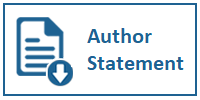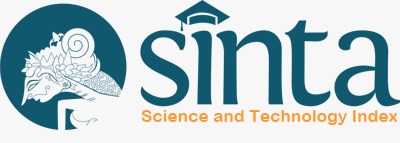The Existence of Youtube Web Series in the Film Industry in Indonesia
DOI:
https://doi.org/10.31937/ultimacomm.v14i1.2232Keywords:
youtubeAbstract
This study explores audience interactivity and change, motivation and satisfaction of web series creators, and the preservation of YouTube as a YouTube Web Series Creative Channel as part of the presence of web series in the film industry in the case study. While the research subject is a producer of YouTube Web Series from Production House (PH) PIM Pictures. Data collection is done through interviews. At the interview stage of this research, the answers are then recorded according to the series of questions that will be discussed. In addition, this study also collects, and examines any data with sources related to the research problem. Based on the results of data analysis obtained in in-depth interviews with Digital Production House Pim Pictures, it can be understood that there are research results, namely the existence of web series in the film industry in Indonesia is the existence of interactivity and change in the audience. second, the motivation of web series creators is for personal interest, providing information, and fulfilling entertainment, existence, satisfaction to introduce before to the big screen. The first source of satisfaction for Web Series creators identified was YouTube-facilitated exposure in the context of social media platforms. third, the promotion of YouTube as a YouTube Web Series Creative Channel allows its users to innovate and create new and independent web series.
Downloads
References
Brundridge, J. (2010). Political discussion and news use in the contemporary public sphere: The "accessibility” and "traversability” of the Internet. Javnost”The Public, 17, 63–82. Retrieved from http://javnost-thepublic.org/article/2010/2/4/
Bureau S (2014) Piracy as an avant-Gardist deviance: how do entrepreneurial pirates contribute to the wealth or misery of nations? International Journal of Entrepreneurship and Small Business 22(4): 426–438.
Burgess J and Green J (2018) YouTube: Online Video and Participatory Culture. Cambridge: Polity Press
Burgess, J., & Green, J. (2009). YouTube: Online Video and Participatory Culture. Malden MA: Polity Press.
Burton, G. (2005). Media and Society, Critical Perspective. New Delhi: Treat Publications.
Cammaerts, B. (2015). Social Media and Activism. The International Encyclopedia of
Digital Communication and Society, 1–8.
https://doi.org/10.1002/9781118767771.wbiedcs083
Chan, A. (2006), "Social interaction design case study: MySpace”, available at: www.gravity7. com/G7_SID_case_myspace_v2.pdf (accessed August 12, 2007).
Cheung. (2010). "Students Uses and Gratifications For Using Computer -Mediated Communication Media In Learning Context”
Cortes-Gomez, S., Martínez-Borda, R., & de la Fuente Prieto, J. (2016). Contribución de las redes sociales a la creación de narrativas transmedia a partir de las series de ficción en Televisión [Transmedia in TV series through social media]. Comunicación y Hombre, (12), 153"’176. Retrieved from https://bit.ly/2jdv2V7
Couldry, N. (2012). Media, Society, World"¯: Social Theory and Digital Media Practice.
Polity Press.
Elkins, E. (2018). Powered by Netflix: speed test services and video-on-demand's global development projects. Media, Culture and Society , 40 (6), 838–855. https://doi.org/10.1177/0163443718754649
Emilia Zboralska (2017) No More Status Quo! Canadian Web-Series Creators' Entrepreneurial Motives Through a Contextualized "Entrepreneuring As Emancipation” Framework, International Journal on Media Management, 19:1, 29-53, DOI: 10.1080/14241277.2016.127094
Flew, T. (2012). The Creative Industries"¯: Culture and Policy. Sage Publications, Inc.
Flew, T. (2014). New Media Fourth Edition. Oxford University Press, Inc.
Garcia-Escriva, V. (2018). Transmediality in digital Hollywood: The case of superhero films. In V. Tur-Vines (Ed.), Actas de las Jornadas Científicas Internacionales sobre Analysis del discurso en un entorno transmedia [Proceedings of the International Scientific Conference on Discourse Analysis in a Transmedia Environment] (pp. 25"’29). Alicante, Spain: Colección Mundo Digital de Revista Mediterranea de Comunicación.
Gikis, SN (2021). Digitalisation in the Development of Media Systems: The Impact of YouTube on Traditional Television (Issue Chesky 2017). Springer International Publishing. https://doi.org/10.1007/978-3-030-69415-9_140
Hilvert-Bruce, Z., Neill, JT, Sjöblom, M., & Hamari, J. (2018). Social motivations of live-streaming viewer engagement on Twitch. Computers in Human Behavior, 84, 58–67. https://doi.org/10.1016/j.chb.2018.02.013
Hilvert-Bruce, Z., Neill, JT, Sjöblom, M., & Hamari, J. (2018). Social motivations of live-streaming viewer engagement on Twitch. Computers in Human Behavior, 84, 58–67. https://doi.org/10.1016/j.chb.2018.02.013
Irfansyah & Isdianto. (2014). Analysis of web series in short film format (CASE STUDY OF WEB SERIES 'NIGHT MINGGU MIKO EPISODE NISSA'). Wimba , 6 (1), 27–40.
Idato, M. (2006), "Snack attack”, available at: www.smh.com.au/news/tv–radio/snack-attack/ 2006/07/29/1153816419535.html (accessed August 26, 2007) .
Kang, JM (2017). Just another platform for television? The emerging web dramas as digital culture in South Korea. Media, Culture & Society, 39(5), 762-772.
Katz, E., Gurevitch, M., & Haas, H. (1973). On the use of the mass media for important things. American Sociological Review, 38(April), 164-181. doi:10.2307/2094393
Kim, J. (2012). The institutionalisation of YouTube: From user-generated content to professionally generated content. Media, Culture and Society , 34 (1), 53–67. https://doi.org/10.1177/0163443711427199
McMillan, D. and Chavis, D. (1986), "Sense of community: a definition and theory”, Journal of Community Psychology, Vol. 14 No. 1, pp. 6-23.
Papacharissi, Z., & Rubin, A. (2000). Predictors of Internet Use. Journal of Broadcasting & Electronic Media - J BROADCAST ELECTRON MEDIA (Vol. 44). https://doi.org/10.1207/s15506878jobem4402_2
Pariser, E. (2011). The Filter Bubble: How the New Personalized Web Is Changing What We Read and How We Think. New York: The Penguin Press
Shao, G. (2009). Understanding the appeal of user-generated media: a uses and gratification perspective. Internet Research , 19 (1), 7 25. https://doi.org/10.1108/106622400910927795
Sonza, L. (2018). Decolonising vision: Native Americans, film and video activism. Video
Journal of Education and Pedagogy, 3(1). https://doi.org/10.1186/s40990-018-
0022-
Thomas, M. (2021). H.Claire Cowart . 4-5.
The top 500 sites on the web. (2019). Retrieved from https://www.alexa.com/topsites
We Are Social Network (2021). We Are Social Digital Data Report https://wearesocial.com/blog/2021/01/digital-2021-the-latest-insights-into-the-state-of-digital
Verizon Wireless (2006), "YouTube goes mobile”, available at: http://news.vzw.com/news/2006/11/pr2006-11-28.html (accessed September 28, 2007).
Williams, B., & Delli Carpini, M. (2011). After broadcast news: Media regimes, democracy, and the new information environment. Cambridge, UK: Cambridge University Press.
Williams, Dan (2012) Web TV Series: How to make and market them, Creative Essentials, Croydon, UK
Wolf, M. (1999), The Entertainment Economy, Times Books, New York, NY. YouTube for Press. (2021). Retrieved from https://www.YouTube.com/intl/en-GB/yt/about/press/
Downloads
Published
How to Cite
Issue
Section
License
Ultimacomm Jurnal Ilmu Komunikasi allows readers to read, download, copy, distribute, print, search, or link to its articles' full texts and allows readers to use them for any other lawful purpose. The journal allows the author(s) to hold the copyright without restrictions. Finally, the journal allows the author(s) to retain publishing rights without restrictions
1. Authors are allowed to archive their submitted article in an open access repository
2. Authors are allowed to archive the final published article in an open access repository with an acknowledgment of its initial publication in this journal














